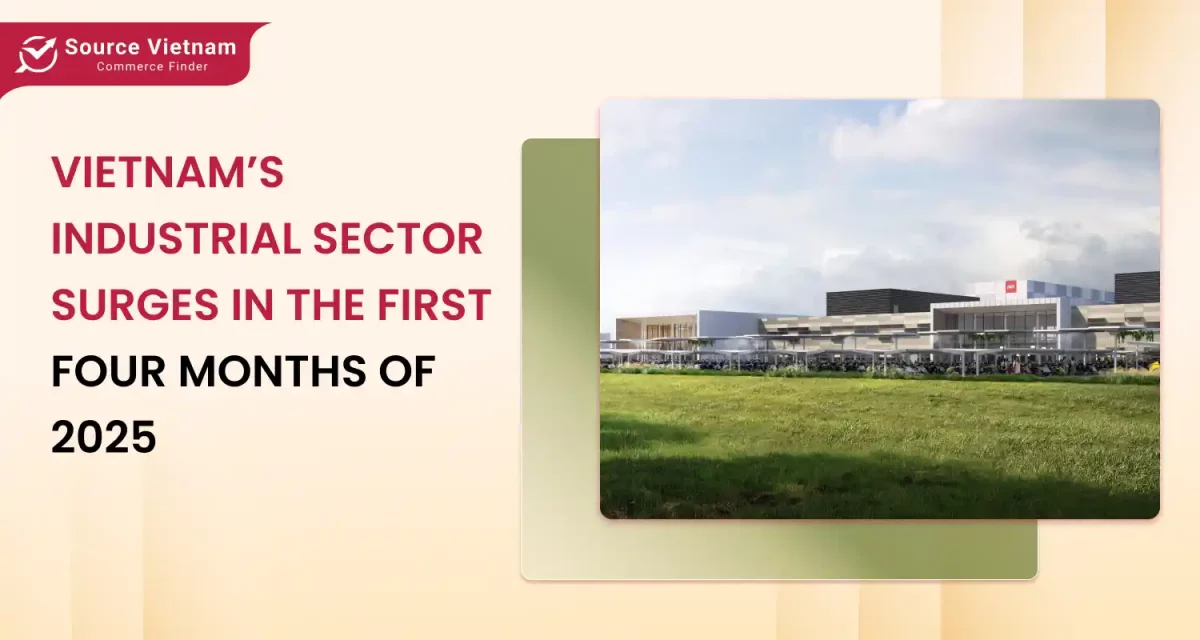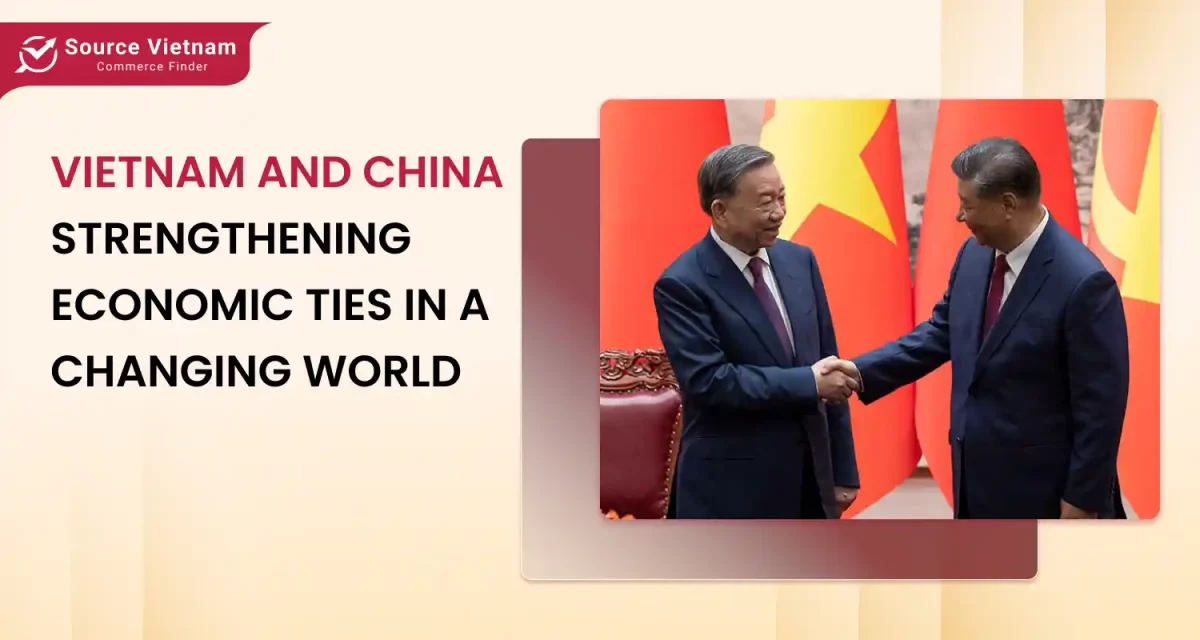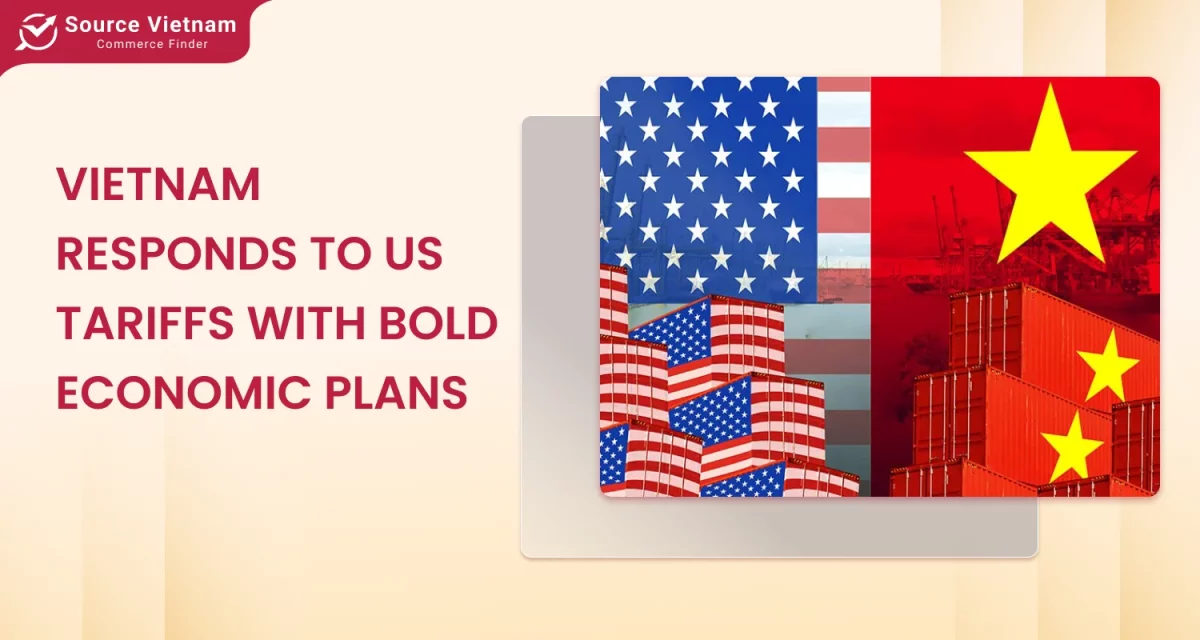Insights:
- Vietnam offers a cost-effective manufacturing alternative to China, focusing on labour-intensive and emerging high-tech sectors.
- While China has superior infrastructure, Vietnam is rapidly improving its infrastructure, skills, and quality to compete.
- Favourable trade dynamics position Vietnam as an attractive manufacturing hub, contingent on maintaining international trade standards.
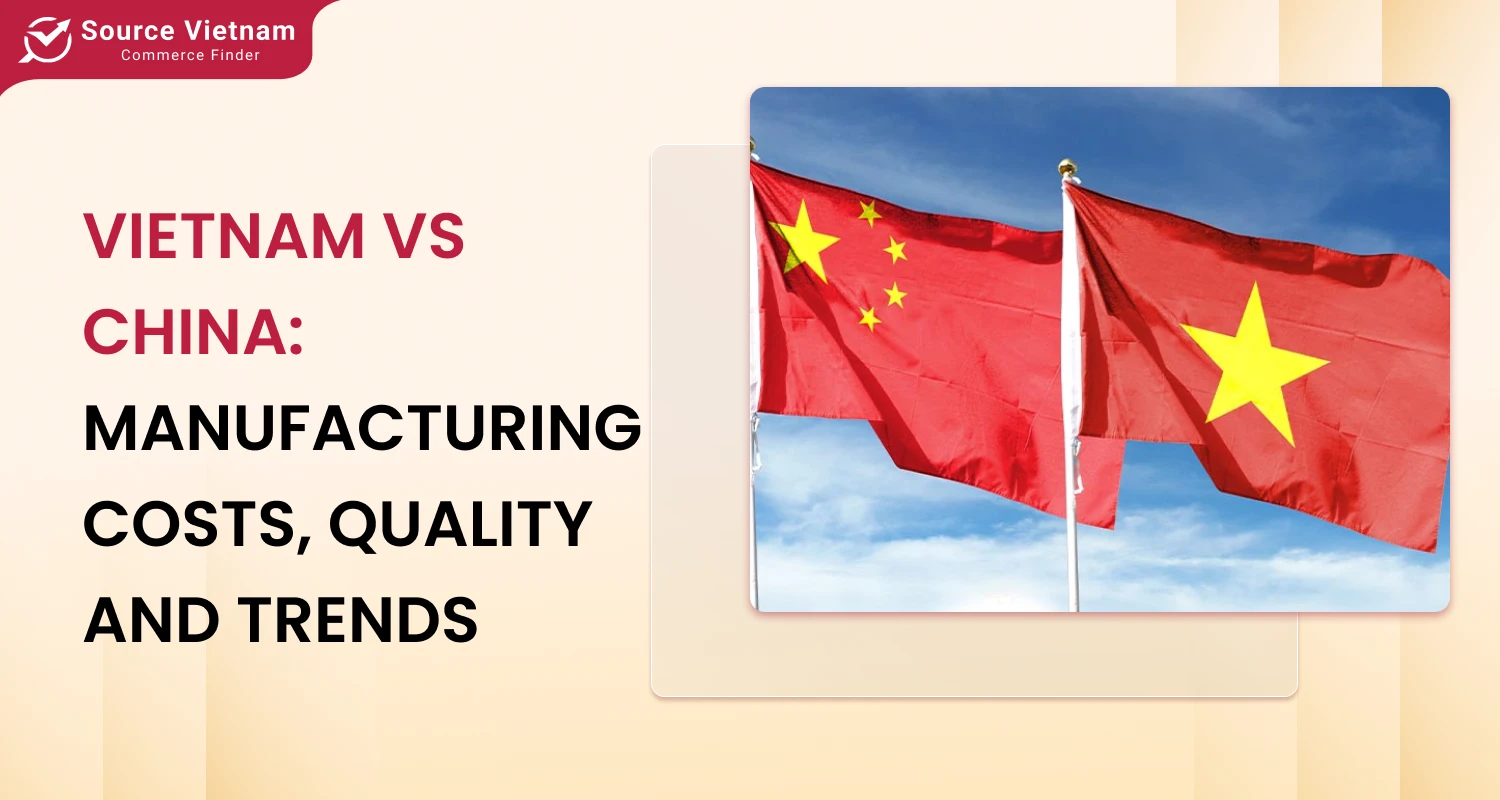
Vietnam is emerging as a strong alternative to China in today’s growing manufacturing landscape. Businesses are increasingly attracted to Vietnam’s cost-effective production, good quality, and strategic market access.
This article briefly compares the two countries’ manufacturing costs, product quality, infrastructure, and future prospects.
Labour costs: Vietnam’s competitive edge
Labour costs are often the first consideration for businesses relocating manufacturing operations. Vietnam presents a notable benefit in this sector:
|
Factor
|
China
|
Vietnam
|
|
Average hourly wage
|
~$6.5 (2020 data)
|
~$3 (2020 data)
|
|
Workforce size
|
Over 775 million workers
|
~58 million workers
|
|
Labor regulations
|
More stringent, higher costs
|
Flexible, lower costs
|
|
*Based on a report by Boston Consulting Group
|
||
Labor-intensive industries like textiles, footwear, and furniture manufacturing can now be well placed in Vietnam, mainly due to its lower wage structure.
On the other hand, China maintains its status as the principal country for manufacturing, which depends heavily on high-technology solutions and automation.
Manufacturing scope and specialization
China has long been considered the “factory of the world,” a title that reflects its remarkable product diversity and vast production capability.
The nation has created a strong supply chain and a workforce with a wide range of trade skills, making it the preferred source for everything from consumer products and machinery to textiles and electronics.
Nonetheless, Vietnam has recently made notable advancements in the world of manufacturing. While it may not match China’s overall production capabilities, Vietnam is steadily carving out its niche in specific sectors.
The country is now known for developing its textiles, apparel, and electronics assembly industry prowess. Besides, Vietnam has made substantial technological advancements, going into significant innovations with an attraction for foreign investment in technology-driven sectors.
That means a commitment to intensifying its manufacturing landscape and putting itself a notch higher in competition against the global market.
|
Factor
|
China
|
Vietnam
|
|
Industrial scope
|
Electronics, machinery, automobiles, textiles
|
Textiles, footwear, furniture, electronics
|
|
High-tech manufacturing
|
Advanced and diverse
|
Growing with investments from Samsung, Intel
|
|
Export market share
|
~26.57% of global high-tech exports (2023)
|
Rising, driven by high-tech electronics
|
Vietnam’s focus on high-value industries, supported by investments from global giants like LG and Nokia, reflects its ambition to rival China in more advanced manufacturing.
Infrastructure and logistics under development
Efficient infrastructure is the backbone of manufacturing success. While China has established impressive global benchmarks, Vietnam strategically invests to accelerate its development and emerge as a formidable competitor.
|
Infrastructure Factor
|
China
|
Vietnam
|
|
Transportation networks
|
Extensive rail, highways, and ports
|
Improving but less developed
|
|
Industrial zones
|
Hundreds of established zones
|
Growing with government incentives
|
|
Power supply
|
Stable and robust
|
Challenges in stability and capacity
|
|
Logistics costs (export)
|
Competitive due to scale
|
Slightly higher, improving with infrastructure projects
|
Vietnam’s government is focusing on modernizing its ports, highways, and industrial zones to improve logistics competitiveness and attract foreign investment.
However, significant challenges remain, including urban congestion in major cities, which complicates logistics operations, and inconsistencies in power supply that threaten industrial productivity. Addressing these issues is essential for achieving the country’s logistics and economic goals.
Quality standards meet expectations and improve rapidly
China has a long history of producing high-quality goods at scale, supported by strong manufacturing infrastructure and expertise.
However, Vietnam is increasingly narrowing this gap. The country is making impressive advancements in its workforce training programs, significantly boosting skills and efficiency.
Additionally, Vietnam is actively adopting advanced technologies, which are helping to streamline production processes and boost overall productivity. This combination of skilled labour and modern technology positions Vietnam as a rising contender in the global market.
|
Quality Factor
|
China
|
Vietnam
|
|
Workforce skill levels
|
Highly skilled in diverse sectors
|
Improving training programs
|
|
Product quality consistency
|
Strong, with advanced systems
|
Growing, especially in electronics
|
|
Certification standards
|
Established global standards
|
Adopting ISO and other standards
|
|
Access to advanced machinery
|
Widely available
|
Increasing with FDI and partnerships
|
|
Quality assurance processes
|
Robust and integrated
|
Developing, with a focus on electronics and apparel
|
|
Defect rates in mass production
|
Low
|
Moderate, improving with experience
|
|
Workforce adaptability
|
High
|
Improving international training collaborations
|
Vietnam is focusing on vocational education and working with multinational companies. This approach is helping to improve the quality of work in various industries.
Trade relations and tariffs
Trade relations and tariffs have greatly influenced manufacturing strategies across the globe. The trade war has imposed very high tariffs on China’s exports. This forces many companies to reconsider their manufacturing locations to mitigate the additional costs.
Vietnam is in good fortune because there are very low tariffs for its exports to the US, resulting in outstanding export growth. Thus, Vietnam is an attractive destination for businesses trying to move their operations. In addition, the country has improved its infrastructure and workforce, which only adds value to its status as a manufacturing hub.
However, Vietnam has to watch over itself since it’s being increasingly scrutinised about international trade practices. Compliance with international trade standards will be paramount as Vietnam readies itself toward an export-led economy. Ignoring these concerns poses risks that threaten its standing in the global market.
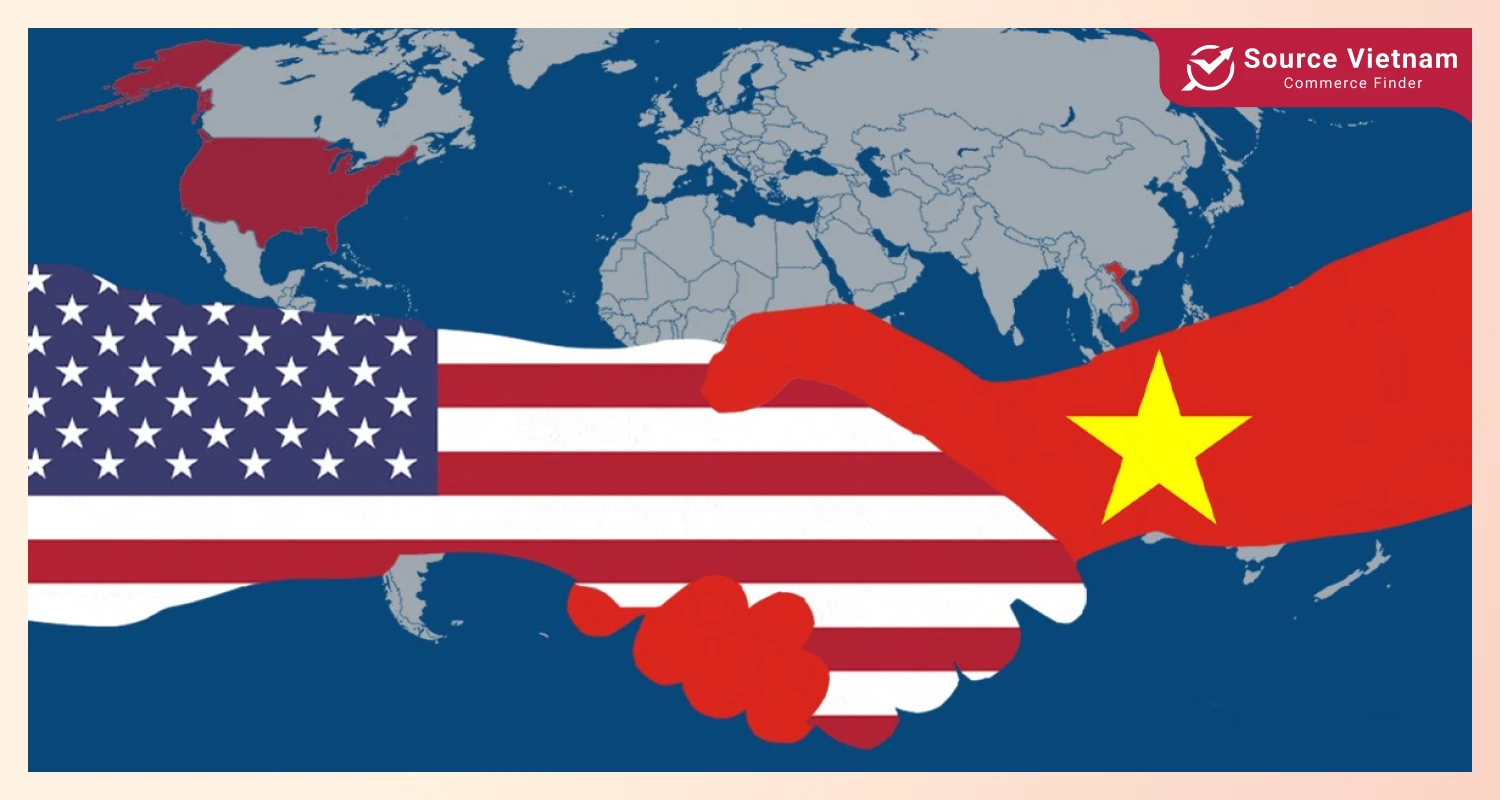
Let’s look at the trade relationship between China and Vietnam, especially their dealings with the United States. China has to pay much higher tariffs on its exports because of the trade war, which challenges its exporters. On the other hand, Vietnam enjoys low tariffs, which gives it more export opportunities and makes it a better choice for international trade.
China maintains market dominance despite having few trade agreements. In contrast, Vietnam has established several free trade agreements, like the CPTPP and EVFTA, enhancing its economic connections with different nations. While China is scrutinized, particularly in technology, Vietnam also faces increased attention over its export practices, which could impact its future trade relationships.
China and Vietnam have distinct roles in international trade. Vietnam has the potential to benefit greatly from changes in manufacturing, but it needs to tackle trade issues to maintain growth and stability in its export-driven economy. The opportunity is there, but it requires strategic planning.
Conclusion
While China remains an industrial powerhouse, Vietnam offers a viable alternative for businesses prioritizing cost-efficiency, strategic trade advantages, and emerging high-tech capabilities. The two decisions depend on specific business needs, including product complexity, infrastructure reliance, and long-term growth strategies.
Vietnam’s fast growth and government support offer substantial opportunities for companies looking to diversify. However, it’s essential to consider the challenges, like gaps in infrastructure and the need for a scalable workforce.
Vietnam’s rise as a manufacturing hub signals a new era of competition and collaboration in the global industrial landscape.

